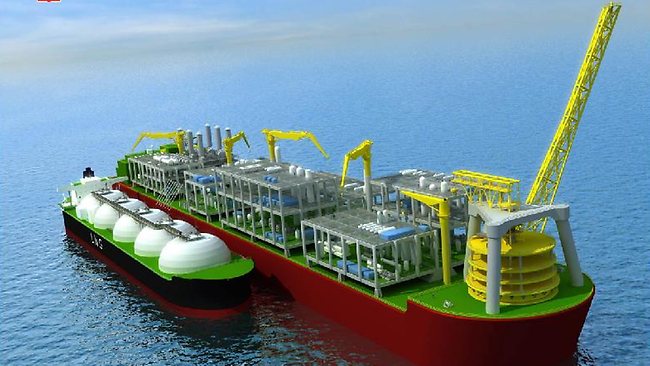Resource Investor has an example of some of the bearish commentary on the US shale boom (more negative than my personal views but I thought it was worth noting) - 5 ways to play the end of the natural gas renaissance.
The Energy Report: Bill, you published a book six months ago, "Cold, Hungry and in the Dark: Exploding the Natural Gas Supply Myth," questioning the conventional wisdom of shale gas. Have events supported your thesis?
Bill Powers: Yes, absolutely. Several of the predictions I made in the book have come true since the book hit the shelves in July. First, we've seen numerous shale plays head into decline. We've seen big declines from the Haynesville as well as the Barnett. The Fayetteville is in decline; there have been further declines in the Gulf of Mexico and Wyoming. But what has really changed is the North American natural gas market has become extremely unbalanced, which was what I had predicted would come to pass sometime in the 2013–2015 timeframe. The cold weather over the last six weeks has accelerated what I have been talking about in the book.
TER: How so?
BP: I predicted that gas prices would lead to layoffs and industry supply disruptions, and that's already occurred. We've seen paper mills in New Hampshire lay people off because natural gas prices in New England were north of $50/million Btu ($50/MMBtu) for a period and remain very high. We've also seen incredibly high prices in New York, and this is a time of record production coming out of the Marcellus. These are really the first examples of the violent price spikes and industrial shutdowns we will see in other parts of the country.
Across the U.S. over the next several years, I predict we will see spikes of very high prices, which will fall back to higher levels than they previously reached. Then, as the next weather event comes, prices will spike to new highs. That has already happened in New England and other areas of the Northeast in part because those areas are supply-constrained due to limited pipeline availability, but also because of increased demand.
The Northeast has also had several nuclear power plants close. Just recently the Vermont Yankee closed. Nuclear power plants have closed over the last decade or so in Maine as well as Connecticut. Much of this capacity has been taken up by increased natural gas demand for electricity generation. So you've had constrained supply because of the limited pipeline capacity and increased demand. In addition to the new demand from electricity generation, significant new demand in the Northeast has come from people converting from heating oil to natural gas furnaces.
Also, there's been a huge disappointment in supply coming from Canada into the Northeast U.S. because Sable Island production offshore Nova Scotia has been so low compared to some very lofty original expectations. We've just had Deep Panuke come on in late 2013 after several delays and many cost overruns, but the pipeline that services those offshore fields in Nova Scotia is not even close to full, and the fields will be depleted fairly rapidly over the next three to seven years. This will be a period of continued supply constraints for New England. The Marcellus and Eagle Ford are the only two fields that are still growing, and I expect the Marcellus to flatten out in 2014. Additionally, we are going to see supply constraints throughout much of the rest of the United States over the next several years.
TER: The pipeline companies have acknowledged that there's a supply constraint. Haven't any of them made plans to extend lines to the Northeast?
BP: Yes, that is happening, and some of them are probably going to increase throughput from the production growth in the Marcellus, but there will be significant calls on Marcellus production, which is probably going to peak this year.
The U.S. Energy Information Administration late last year put out a white paper that talked about how gas production is becoming more efficient. But this white paper did not include the Barnett Shale, which is in steep decline now. It's true, efficiencies have been gained over the last several years, such as the way fracking has changed, and operators are becoming more efficient in fracking, with longer laterals. But what is really happening is the completion of the inventory of previously drilled wells.
When companies ramp up their drilling activity, they often will drill more wells than they actually complete due to lack of pipeline capacity. Just recently, there have been about 200 wells in the Marcellus that were waiting for pipeline connections or to be fracked. A lot of those wells have been fracked over the last six months and the inventory continues to go down. I believe that inventory will be depleted by Q1/14, and given the drilling activity, the very high decline rates of the wells and the number of rigs running in the Marcellus, further growth is not supported. The Marcellus is still a very significant field, the biggest in the United States. When it peaks out it will probably plateau for a while, depending on activity levels, but it still will not be able to make up for falling production in nearly every other region in the United States. When this happens, we will see price spikes more frequently.














